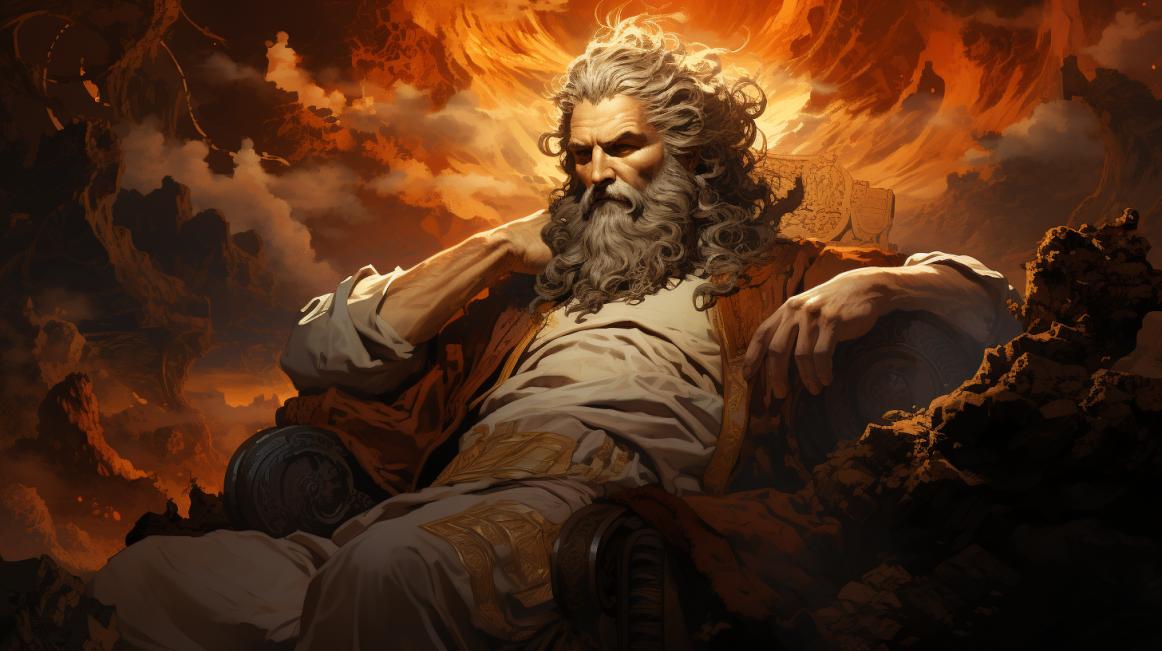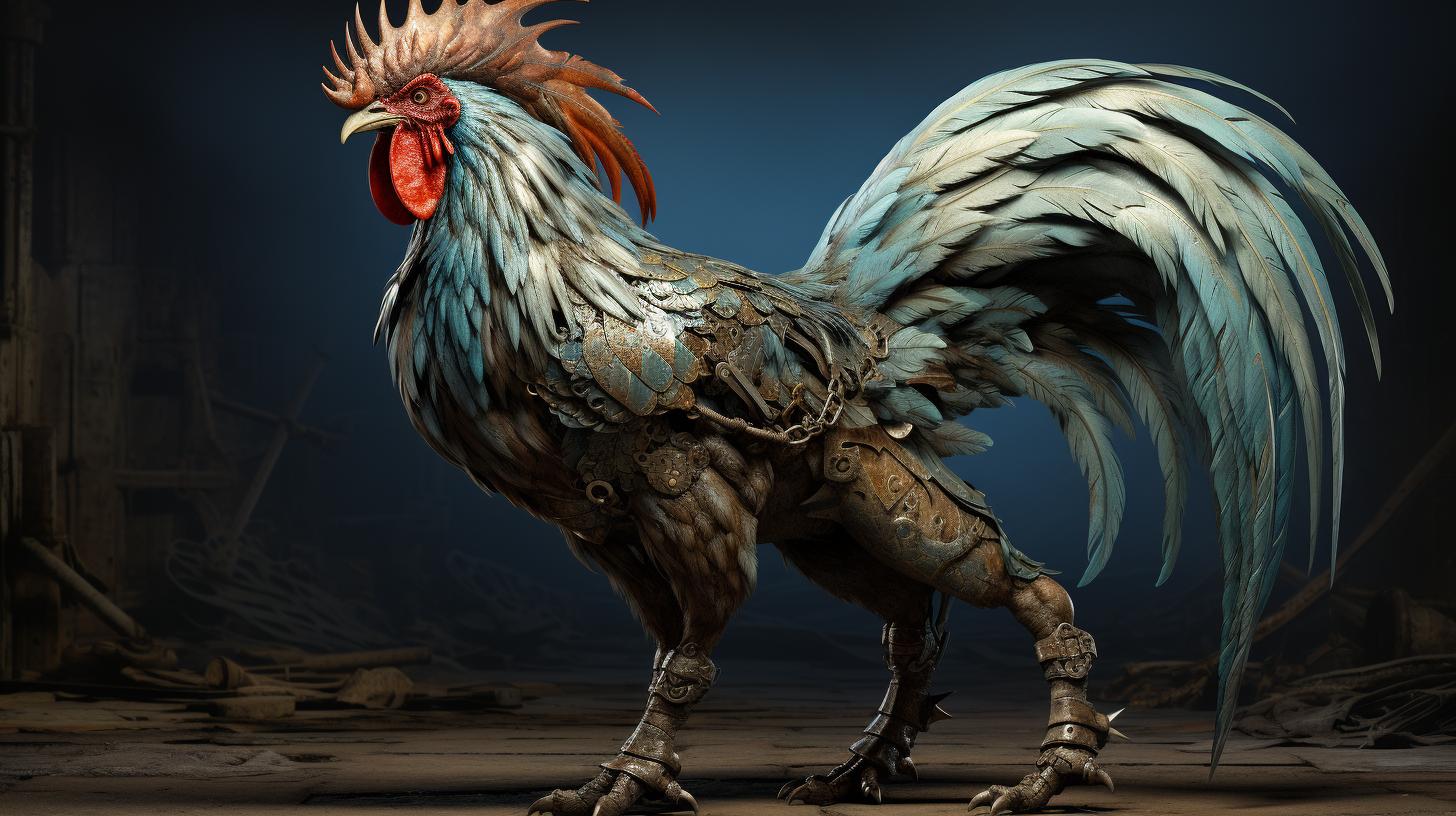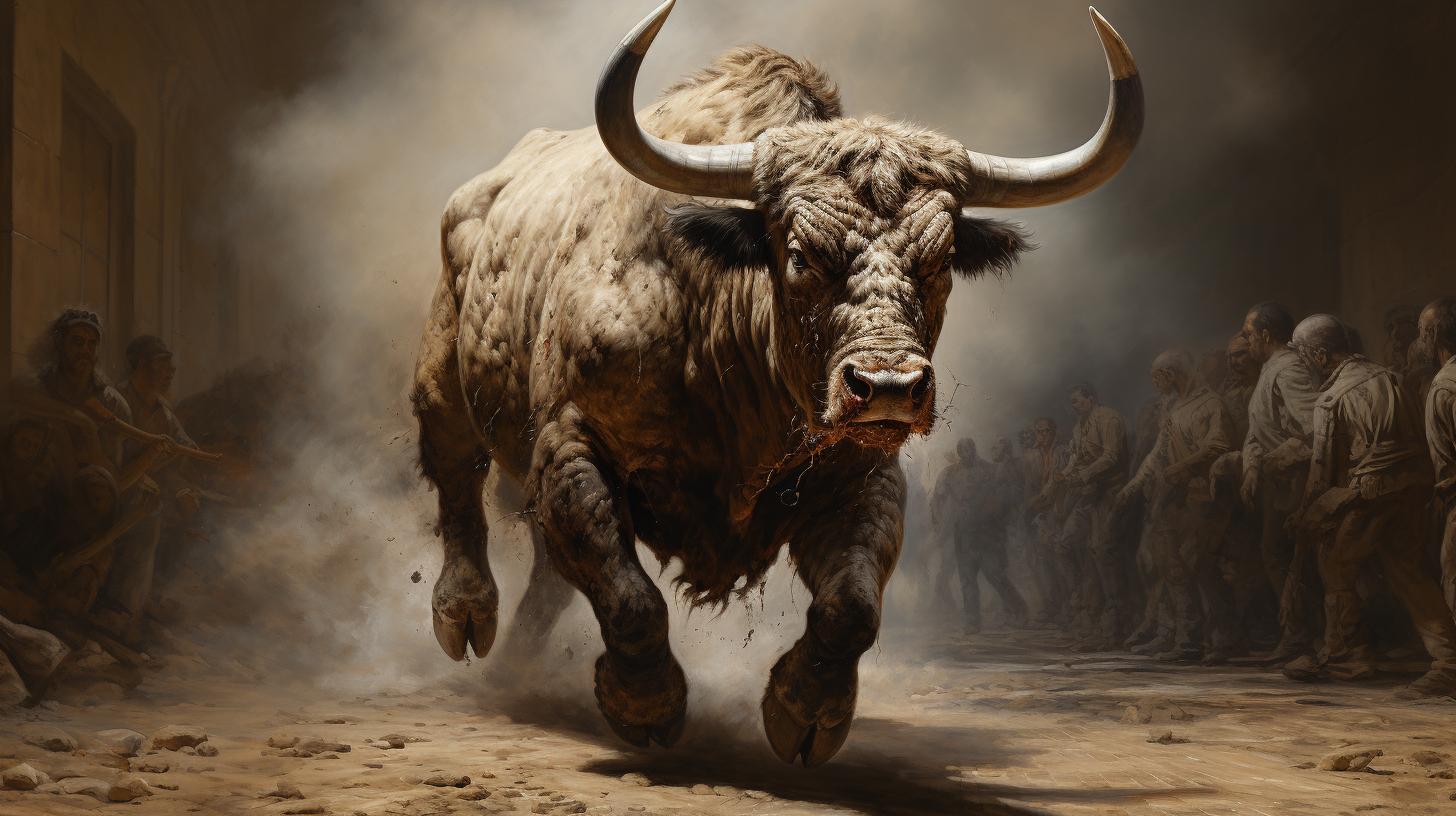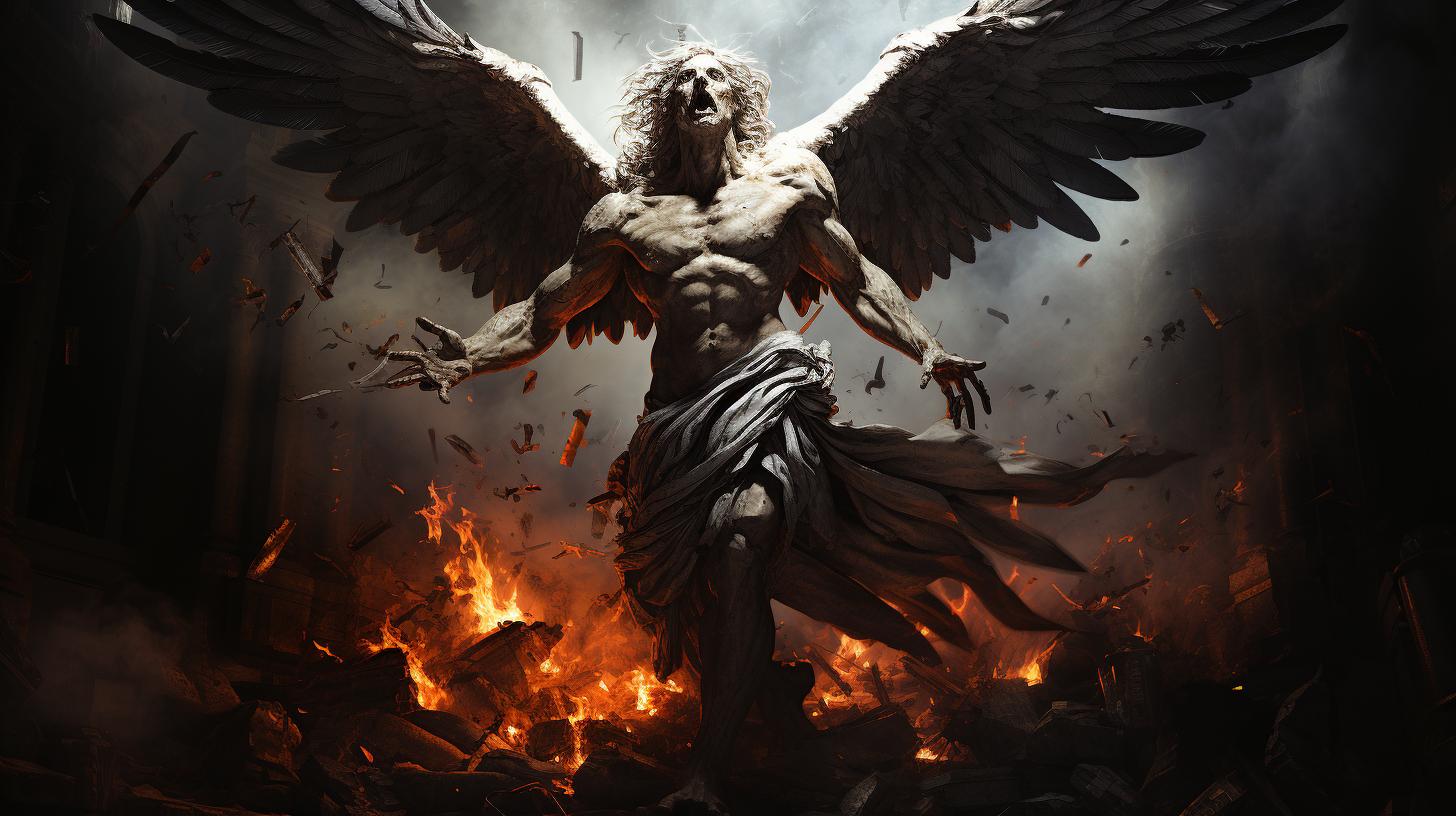Attis Greek God: Exploring the Mythology and Worship in Ancient Greece

Attis Greek God was an important figure in Greek mythology, closely associated with the region of Frigia in Anatolia, Turkey. According to legends, Attis was the son of Galaos and Nana, and his origins were quite unusual.
Raised by a male goat, Attis grew up to be a handsome man with divine features. His story involved a tragic love affair with Cybele, the goddess of the earth, leading to a series of extraordinary events.
Attis’ tale became a symbol of the agricultural cycle, where vegetation dies in winter and blooms again in spring. Throughout this article, we will explore the various aspects of Attis Greek God’s fascinating mythology and worship.
Attis Greek God: Overview and Background
Attis Greek God holds a significant place in the realm of ancient Greek mythology. He is closely associated with the region of Phrygia in Anatolia, Turkey, and his story has captivated generations of believers and scholars alike.
Exploring the origins, myths, and cultural significance of Attis Greek God provides a deeper understanding of this enigmatic figure.
As we delve into the background of Attis, we unravel a tale that intertwines love, tragedy, and the cyclical nature of life.
Attis is believed to be the son of Galaos and Nana, who was impregnated by an almond that sprouted from the castrated genitals of Agdistis, a hermaphroditic demon. Abandoned by his mother, Attis was nurtured and raised by a male goat until he grew into a handsome man with divine features.
One of the most captivating aspects of Attis Greek God is his deep connection with Cybele, the goddess mother of the Earth. It is said that Cybele, in her form as Agdistis, fell in love with Attis.
This infatuation led to a tragic event during Attis’ wedding to the daughter of King Midas of Pesinonte, as Agdistis/Cybele unleashed a surge of jealousy and violence. The ensuing frenzy resulted in the madness and castration of the bride, groom, and the bride’s father.
Ultimately, Attis succumbed to self-inflicted wounds.
The sorrow-stricken Agdistis pleaded with Zeus to preserve Attis’ body, ensuring it would never decay or deteriorate. Despite being a mortal, Attis was revered and worshipped, evolving into a symbol of the agricultural cycle, where vegetation dies in winter and resurrects in spring.
The Frigian invaders embraced the tale of Attis Greek God, merging it with their own mythology. The Frigians venerated Cybele as their Great Mother of the Gods, with Attis becoming her consort.
Known as the Galli, the priests of Cybele were eunuchs, a parallel to Attis himself. The cult of Attis originated in the 13th century BC in Phrygia and gradually spread to Lydia when it gained control over the region.
Attis was also identified with Iasion, the consort of the Great Mother in the Samothracian mysteries, as well as the Greek tale of Aphrodite and Anchises on Mount Ida in Troas.
Attis Greek God was at the center of an annual celebration of mysteries during the springtime revival. The worship of Attis and the Great Mother extended throughout the Roman Empire, and by the 2nd century AD, Attis took on the role of a solar deity.
The cult was associated with the ritual castration, performed by initiates of the priesthood of Cybele, as a reflection of Attis’ story.
Artistic representations of Attis portray him as a youthful figure donning a Phrygian cap and trousers, often adorned with a pine garland.
Notable statues of Attis have been discovered in Ostia Antica, near the mouth of the Tiber River in Italy, and a throne embellished with a relief in Herculaneum.
Delving into the overview and background of Attis Greek God unveils a captivating narrative intertwined with mythology, devotion, and the seasonal rhythms of nature.
This exploration sets the stage for a deeper exploration of the myths and cultural significance surrounding Attis, offering a window into ancient belief systems that shaped civilizations across time.
The Mythology of Attis God
Attis, the Greek god of vegetation, holds a fascinating place in ancient mythology.
His story encompasses elements of love, tragedy, and divine intervention, weaving a complex narrative that captivates the imagination.
In Greek mythology, Attis was the son of Galaos and Nana. The circumstances of his birth are both extraordinary and intertwined with the supernatural.
Legend has it that Nana was impregnated by an almond that sprouted from the severed genitals of Agdistis, a hermaphroditic demon. Abandoned by his mother, Attis was raised by a male goat and grew up to possess extraordinary beauty and divine qualities.
It was Attis’ exceptional charm and allure that caught the attention of Cybele, the mother goddess of the earth. Previously transformed into Agdistis, she fell deeply in love with Attis.
However, Attis was already committed to marry the daughter of King Midas of Phrygia, which stirred jealousy in Cybele’s heart.
Tragedy struck during Attis’ wedding ceremony when a furious and jealous Cybele attacked him.
The bride, the groom, and even the father of the bride were driven to madness and castrated themselves in a frenzied act. Attis, mortally wounded by his own self-inflicted injuries, met a tragic end.
Distraught and inconsolable, Cybele pleaded with Zeus to ensure the preservation of Attis’ body, so it would never decay or deteriorate. Although Attis was a mortal, he became revered and worshipped, his story symbolizing the cycle of agricultural growth, where vegetation dies in the winter and regenerates in the spring.
The mythology of Attis was adopted by the invading Phrygians, intertwining with their own beliefs and practices. The Phrygians worshipped Cybele as their Great Mother Goddess, with Attis becoming her consort.
The priests of Cybele, known as the Galli, emulated Attis by undergoing castration, just as he had done.
This captivating mythos surrounding Attis led to the annual celebration of mysteries during the spring season.
The worship of Attis and the Great Mother spread throughout the Roman Empire, with Attis eventually becoming associated with solar deities in the 2nd century AD.
Artistic representations of Attis often portray him as a youthful figure wearing a Phrygian cap and pants, with a pine wreath adorning his head.
Notable statues of Attis have been discovered, such as the one in Ostia Antica, near the Tiber River’s mouth in Italy, and a throne adorned with a relief found in Herculaneum.
Attis’ influence and legacy also extended beyond Phrygian culture, connecting him to the Great Mother’s consort in the Samothracian mysteries and the Greek tale of Aphrodite and Anchises on Mount Ida in Troas.
Delving into the mythology of Attis God unveils a rich tapestry of passion, tragedy, and spiritual significance that continues to enthrall scholars and enthusiasts of ancient cultures.
The Birth and Origins of Attis
According to Greek mythology, the birth and origins of Attis are shrouded in an extraordinary tale.
Attis was believed to be the son of Galaos and Nana. Nana, while wandering through a grove of almond trees, came across an almond that miraculously impregnated her. This almond was said to have grown from the severed genitals of Agdistis, a hermaphroditic demon.
After giving birth to Attis, Nana abandoned him, and he was discovered and nurtured by a male goat. As Attis grew older, he blossomed into a remarkably handsome man with divine attributes.
Attis’ birth and upbringing were closely linked to the region of Frigia in Anatolia (present-day Turkey). Frigian myth and tradition assimilated Attis into their cultural narratives, establishing him as an essential figure in their mythology and religious practices.
Thus, it is in Frigian mythology that Attis finds a significant place.
The story of Attis, with its intricate connections and layered symbolism, reflects the cyclical nature of life and death, particularly focusing on the cycle of vegetation.
Attis’ birth and heritage serve as the foundation for his role as a deity associated with the rejuvenation and renewal of nature.
In the rich tapestry of Greek mythology, the birth and origins of Attis provide a fascinating starting point for understanding this complex and significant figure.
Attis and Cybele: A Divine Love Story
The captivating tale of Attis Greek God is intertwined with a profound love story involving Cybele, the goddess of the earth. As the narrative unfolds, it becomes apparent that their bond is one of passion and divine significance.
When Attis, the handsome and divine man, caught the attention of Cybele, she became enamored with him. However, Attis was already engaged to the daughter of King Midas of Pesinonte, which fueled the flames of jealousy within Cybele. The events that transpired during their wedding ceremony were nothing short of tragic.
During the ceremony, Cybele, in her altered form of Agdistis, launched a ferocious attack on Attis out of jealousy. The ensuing chaos caused both the bride, groom, and the bride’s father to descend into madness, resulting in an act of castration in a frenzy of emotions.
It was within this tumultuous state that Attis inflicted fatal wounds upon himself and met his untimely demise.
Overwhelmed by grief, Agdistis implored Zeus to preserve Attis’ body from decay and deterioration.
In an expression of divine intervention, the mortal Attis was revered and worshipped, etching his story into the annals of agrarian rituals that symbolize the cyclical nature of vegetation, where death ultimately gives way to rebirth.
The Tragic Fate of Attis
Attis, the Greek god of vegetation, met a tragic end that echoed the complexities of his divine relationships. Engaged to marry the daughter of King Midas of Phrygia, Attis became the unwitting target of the goddess Cybele’s jealousy.
During the wedding ceremony, Cybele, who was originally known as Agdistis, unleashed her wrath upon Attis out of her unrequited love for him.
In a fit of divine frenzy, Cybele attacked the wedding party, causing chaos and madness to ensue.
Attis, caught in the midst of this turmoil, inflicted severe self-harm, resulting in his untimely demise. His wounds were self-inflicted, a reflection of his own anguish and despair from the situation.
The tragic fate of Attis represented the cyclical nature of life and death in the agricultural world. Just as vegetation dies in winter but ultimately rejuvenates in spring, Attis’s demise mirrored this natural pattern.
His story served as a powerful reminder of the transient nature of existence and the impermanence of all living things.
The Cult of Attis: Worship and Rituals
In the ancient world, the cult of Attis was a prominent religious practice centered around the worship of Attis Greek God and his consort, Cybele. It involved elaborate rituals and ceremonies that were observed by devoted followers and initiated priests known as the Galli.
1. Initiation Rites: The cult of Attis required initiates to undergo specific rituals to become members of the religious community. These initiation rites often involved purification ceremonies, symbolic sacrifices, and tests of loyalty to the deity.
2. Castration Ritual: One of the most distinctive and significant aspects of the Attis cult was the act of castration. Inspired by the tragic fate of Attis himself, the Galli priests would castrate themselves as a way to emulate and honor the divine suffering of the god.
This act symbolized their dedication and devotion to Cybele and Attis.
3. Mysteries and Celebrations: The cult of Attis included annual celebrations known as the Attis Mysteries, which were held during the spring season, symbolizing the rejuvenation of nature.
These festivities involved processions, music, dancing, and fervent devotion to Attis and Cybele.
4. Sacred Music and Instruments: Music played a vital role in the worship of Attis. The Galli priests were known for their ecstatic and frenzied dances accompanied by the sounds of hand-held drums, tambourines, flutes, and cymbals.
The rhythmic beat of these instruments served to invoke a trance-like state and connect the worshippers with the divine.
5. Offerings and Sacrifices: Devotees of Attis would make offerings to the god and his consort, Cybele, as a way to seek their favor and blessing.
These offerings typically consisted of fruits, flowers, grains, and symbolic representations of fertility and abundance.
6. Temples and Sacred Spaces: The cult of Attis had dedicated temples and sacred spaces where worshippers would gather to pay homage to the gods.
These places were adorned with statues, reliefs, and symbolic representations of Attis and Cybele, creating a sense of divine presence and sanctity.
7. Devotion and Personal Vows: Followers of Attis would express their devotion by making personal vows and dedications to the god.
These vows often involved acts of selflessness, charity, or lifelong service to the cult and its rituals.
The cult of Attis Greek God flourished in various regions, particularly in Phrygia and later in the Roman Empire.
Its rituals and worship practices were deeply ingrained in the religious and social fabric of the communities that embraced it.
Attis in Frigian Culture and Mythology
In Frigian culture and mythology, Attis held a significant place as a revered figure closely associated with the land. The story of Attis, originating from the region of Frigia in Anatolia, Turkey, became intertwined with the local beliefs and practices of the Frigian people.
Attis was particularly worshipped as the consort of Cybele, the Great Mother of the Gods in Frigian mythology. This divine partnership played a central role in the religious customs and traditions of the Frigians.
- Attis and Cybele: The Frigian Connection
The Frigian people regarded Cybele as their primary deity, often referred to as the Great Mother of the Gods. Attis became an integral part of the Frigian pantheon as Cybele’s beloved consort.
Their mythological union reflected the connection between nature and fertility in Frigian culture.
Their relationship represented the cyclical nature of the agricultural seasons. Just as Attis was reborn after his tragic death, the land would rejuvenate in the spring, ensuring bountiful harvests for the Frigian people.
- The Galli: Attis’ Eunuch Priests
- The Attis Festivals
The worship of Attis and Cybele in Frigian culture involved the celebration of various festivals and rituals. One prominent aspect of their religious practices was the role of the Galli, the eunuch priests dedicated to the service of Cybele and Attis.
These castrated priests played a vital role in religious ceremonies, symbolizing Attis’ self-castration and his union with the divine.
During the Attis festivals, these devoted priests led processions and performed sacred rites to honor both Attis and Cybele. These celebrations included music, dancing, and ecstatic rituals, demonstrating the profound devotion of the Frigian people to their deities.
Attis’ presence in Frigian culture and mythology exemplified the belief in the connection between human existence and the cyclical patterns of nature. His story and worship provided a framework for the Frigian people to understand their place in the natural world and the profound significance of the agricultural cycle.
Attis and the Trojans: Connections and Influences
Attis, the Greek god of vegetation, shared various connections and influences with the Trojans, the ancient inhabitants of the city of Troy. These connections are primarily observed through Attis’ association with the Phrygian culture, which had close ties to the Trojans.
1. Attis and the Trojans: Cultural Exchange
The Phrygians, from whom Attis originated, were known to have interacted and exchanged cultural influences with the Trojans. Their close geographical proximity and shared Anatolian heritage facilitated this cultural exchange, allowing Attis’ mythology to permeate into Trojan religious beliefs.
2. Attis in Trojan Mythology
Attis’ presence in Trojan mythology is evident through his identification with Iasus, the consort of the Great Mother goddess in the Samothracian mysteries. This association highlights the blending and assimilation of Phrygian and Trojan religious practices, cementing Attis’ significance within Trojan culture.
3. Attis and the Trojan War
Although not directly involved in the Trojan War, Attis’ mythology and worship would have played a role in shaping the religious landscape of the Trojans during this tumultuous time.
The religious practices surrounding Attis, including the castration ritual, may have influenced the spiritual beliefs and rituals adopted by the Trojans.
4. Attis and the Fall of Troy
While Attis himself is not explicitly mentioned in the fall of Troy, his enduring presence in the Anatolian region suggests that his worship and mythology could have influenced the spiritual resilience and religious practices of the Trojans during their final days.
Attis may have served as a symbol of hope and rebirth for the Trojans as they faced the devastation of their beloved city.
Overall, Attis’ connections and influences on the Trojans illustrate the interconnectedness of ancient Anatolian cultures and their shared religious beliefs.
Attis’ mythology, originating in Phrygia, spread throughout the region and left its mark on the Trojans, contributing to their religious worldview and cultural practices.
Attis in Greek and Roman Mythology
Attis, the Greek god of vegetation, played a significant role in both Greek and Roman mythology. While his origins are rooted in Phrygian culture, his story permeated throughout the ancient Mediterranean world.
In Greek mythology, Attis was primarily associated with the goddess Cybele, who was revered as the Great Mother of the Gods. Their relationship was not only romantic but also symbolized the cyclic nature of life and death.
Attis was often depicted as the consort of Cybele, accompanying her in various religious rites.
Attis’ connections extended beyond Cybele, as he was also associated with other prominent figures.
In the story of Aphrodite and Anchises on Mount Ida, Attis was identified with Iasus, the consort of the Great Mother in the mysteries of Samothrace. This shows the interweaving of Attis’ narrative with other significant tales in Greek mythology.
As the influence of Greek civilization spread to the Roman Empire, Attis’ story gained popularity among the Romans. The Romans identified Attis with their own deities, such as the god of fertility and vegetation, Priapus. This assimilation resulted in the establishment of Attis’ cult throughout the Roman Empire.
The worship of Attis in Roman mythology was characterized by elaborate rituals and celebrations. These rites often involved self-mutilation and castration, emulating Attis’ own tragic fate. The participants in the cult, known as the Galli, were eunuchs who dedicated themselves to the service of Cybele and Attis.
Attis’ presence in both Greek and Roman mythology reflects his cultural and religious significance across ancient civilizations. His story not only showcased the eternal cycles of nature but also offered a glimpse into the complex relationship between gods and mortals.
Attis and the Cycle of Nature
The story of Attis Greek God holds a deep symbolic connection to the cycle of nature. It reflects the eternal rhythm of life, death, and rebirth that is witnessed in the natural world around us.
Attis, as a deity of vegetation, represents the cycle of growth and decay that occurs within the plant kingdom. Just like the plants wither away in the harsh winter months, only to revive and flourish in the spring, Attis embodies this cycle in his own existence.
His death, along with the castration ritual he undergoes, symbolizes the sacrificial aspect of the agricultural cycle. It signifies the sacrifice of the old, worn-out vegetation to make way for the new, fresh growth that will follow.
Attis’ union with Cybele, the earth goddess, further emphasizes this connection to nature’s cycle. Cybele, as the embodiment of the nurturing and life-giving aspects of the earth, aligns with the rejuvenation and revival observed in the cycle of nature.
The worship and rituals associated with Attis serve to celebrate this cycle of nature and acknowledge the vital role it plays in sustaining life on Earth. The followers of Attis engage in ceremonies and festivities during the spring season, marking the return of vitality and growth after the barrenness of winter.
Through the veneration of Attis Greek God, the ancient Greeks and later the Romans sought to honor the profound interplay between humanity and the natural world. They recognized the cyclical patterns of nature as intrinsically linked to their own existence, as they depended on the bounties of nature for their sustenance and survival.
The story of Attis, with its reflection of the cyclical nature of life and the interconnectedness of all living beings, continues to inspire contemplation and reverence for the natural world even in modern times.
Legacy and Influence of Attis in Greek and Roman Civilization
Attis, the Greek god of vegetation, left a lasting impact on both Greek and Roman civilizations. His mythology and worship seeped into various aspects of their cultures, leaving behind a significant legacy that endured for centuries.
1. Mythological Influence:
- Attis’ story, with its themes of love, tragedy, and rebirth, resonated deeply with the Greeks and Romans.
- His tale became part of the wider tapestry of Greek and Roman mythology, enriching the religious and cultural narratives of both civilizations.
- The symbolism of Attis’ relationship with Cybele, the divine mother, influenced the perception of divine love and its consequences.
2.
Religious and Ritualistic Impact:
- The cult of Attis, which originated in Phrygia, found significant popularity in both Greece and Rome.
- Attis’ worship involved elaborate ceremonies, including initiations and mystical rites performed by the priests known as the Galli.
- This cultic worship influenced the religious practices and rituals of the Greeks and Romans, introducing elements of ecstatic worship and castration rituals in honor of Attis.
3.
Agricultural Symbolism:
- Attis, as the god of vegetation, became associated with the agricultural cycle and the seasons.
- His story of death and rebirth symbolized the cyclic nature of the harvest, with Attis’ resurrection representing the renewal of life and fertility.
- The agricultural communities in Greece and Rome looked to Attis as a symbol of hope and the promise of abundance in the harvest.
4.
Artistic Representations:
- Attis’ influence extended to the realm of art, with numerous sculptures and artistic depictions showcasing his iconic appearance.
- Artworks often portrayed him as a youthful figure wearing a Phrygian cap and adorned with a pine garland, capturing his divine beauty and role in nature.
- These artistic representations further popularized Attis’ image and elevated his status as a recognizable deity in the visual arts.
Attis Greek God’s legacy highlights the interconnectedness of Greek and Roman mythology and showcases the enduring presence of ancient deities in the cultural fabric of civilizations.
His story, rituals, and symbolism continue to fascinate and inspire even in the modern era, ensuring his place as a significant figure in classical mythology.
.




















